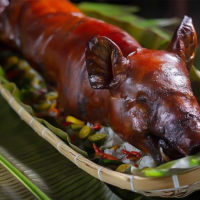
When visiting the Philippines, it’s beneficial for tourists to learn a bit of the local language to communicate effectively with the locals. With over 120 dialects spoken across the archipelago and many Filipinos able to speak at least 2-3 languages, understanding even a few slang terms can enhance interactions and help avoid confusion. Filipino slang is rich and varied, reflecting the dynamic culture and modern influences that shape daily conversations.
Related articles: Filipino Traits That Foreigners May Find Funny, Peculiar, and Adorable
Understanding Filipino Slang

Filipino slang words are informal terms and expressions that locals commonly use in everyday conversations. These slangs can be categorized into three main types:
1. Street Slang: These are the ubiquitous terms heard in daily interactions, often reflecting the lively and dynamic street culture of the Philippines.
2. Trendy Slang: These expressions are particularly popular among millennials, often originating from pop culture, media, and social trends. Terms like “petmalu” (cool) and “marites” (gossip) exemplify how the younger generation shapes and evolves the language.
3. Internet Slang: With the rise of digital communication, certain terms have become prevalent online but have also seeped into everyday use among Filipinos. These terms are commonly used on texting (since Philippines is considered as the texting capital of the world), social media, and in face-to-face interactions.
Related article: Only in the Philippines
These slang terms illustrate the vibrant and adaptive nature of the Filipino language.
NOTE: For the sake of this article, we’re going to concentrate only on Tagalog slang terms because even though Filipinos have many regional dialects, Tagalog is widely spoken in many parts of the country, much like English.
Popular Filipino Street Slangs
1. Pare/Pre/Bro
Definition: These terms are used to refer to a friend, acquaintance, or even a male relative of the same age.
Example: “Pare, kamusta ka na?” (Bro, how have you been?)
2. Chibog and Chibugan na
Definition: Chibog means “to eat,” while Chibugan na is an invitation to eat.
Example: “Chibugan na, mga pare!” (Let’s eat, guys!)
Related article: 10 Must-Try Filipino Dishes
3. Jeproks/Jeprox
Definition: Refers to someone who is laid back, cool, or from the hood.
Example: “Si Mark, jeprox talaga siya.” (Mark is really laid back.)
4. Basta
Definition: A term that means “just because.”
Example: “Basta, walang uuwi hanggat’ di natin natatapos itong island-hopping natin dito sa Bohol!” (No one goes home until we finish our island-hopping adventure here in Bohol, that’s it!)
Related article: Bohol Island Hopping Video
5. Chicka/Chika
Definition: Refers to the latest gossip or news.
Example: “Ano ang chicka ngayon?” (What’s the latest gossip?)
Popular Filipino Trendy Slangs
1. Sana all/Sana ol
Definition: An expression wishing the best for someone’s success or wishing everyone could experience what someone is experiencing.
Example: “May bagong kotse si Anna, sana all!” (Anna has a new car, I wish everyone could have one too.)
It can also be used in a sarcastic way like, “Oo ikaw na ang may boyfriend, sana ol!” (Yes, you have a boyfriend, you’re indeed the lucky one!)
2. Beshie
Definition: A term of endearment for a friend or best friend. “Momshie” is a variation that refers to an older female friend.
Example: “Kumusta ka na, beshie? Balita ko galing ka Amanpulo” (How are you, bestie? I’ve heard you just came from Amanpulo?)
Related article: The Most Exclusive Resorts in the Philippines
3. Petmalu
Definition: Derived from the word ‘Malupet’ (spelled backwards), it means something extraordinary or awesome.
Example: “Petmalu talaga ang performance mo sa Maskara Festival!” (Your performance at the Maskara Festival was really awesome!)
Related article: Must-see Festivals in the Philippines
4. Pak Ganern!
Definition: Said at the end of a statement to emphasize a point when reasoning, similar to “boom!”, “that’s it!”, or “precisely” in English.
Example: “”Kailangan natin ng teamwork para magtagumpay, pak ganern!”” (What we need is teamwork to succeed, that’s it!)
5. Charot
Definition: It’s a term that is said immediately after a statement. And it signifies that you’re just kidding.
Example: “Uy, nanalo ako sa lotto. Mayaman na ako… Charot!” (Hey I won the lotto. I’m rich… Kidding!)
Popular Filipino Internet Slangs

1. Bet/Bet ko yan
Definition: An expression of approval or affirmation.
Example: “Bet ko yang ideya mo. Tara, pasyal tayo sa Perto Galera!” (I totally agree with your idea. Let’s go to Puerto Galera!)
2. Push mo yan
Definition: Means “go for it!”
Example: “Gust mo magbakasyon sa Coron, Palawan? Push mo yan!” (You want to on a vacation to Coron, Palawan? Go for it!)
3. YOLO
Definition: Acronym for “You Only Live Once.”
Example: “YOLO pare kaya pumunta tayo sa Baguio, kumain ng street food, o magbeach tayo sa iba’t-ibang lugar sa Pilipinas!” (Let’s go to Baguio, eat some Filipino street food or visit some of the must-see beach destinations in the Philippines because we only live once!)
4. Lods
Definition: derived from the word ‘idol’ and means “famous” or “a person you look up to.”
Example: “Lods, sama ka? Puntahan natin yung iilan sa mga sikat na bars dito sa Manila.” (Idol, you wanna come? Let’s visit some of the trendiest places in the metro.)
5. How to be you po?
Definition: Means “I want to be as good or successful as you” or “What’s your secret?”
Example: “Grabe, ang galing mo! How to be you po?” (Wow, you’re so good! What’s your secret?)
Conclusion
Learning Filipino slang can greatly enhance your experience when visiting the Philippines. From street slang to trendy and internet slang, these terms reflect the vibrancy and dynamic culture of the Filipino people. Whether you’re making new friends, indulging in local gossip, or navigating the online world, understanding these expressions will help you connect more deeply with the locals and enrich your travel experience.
Related article: Do’s and Don’ts in the Philippines
–
Featured Image by nib Dental Care Centre





